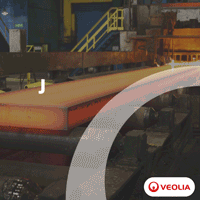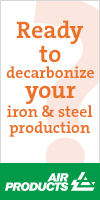MEPS Sees EU Steel Prices Threatened by Rising Imports and High Inventories
02/22/2005 - According to MEPS (International) Ltd, increasing European steel values have made the EU the most expensive market in the world. As a result, larger volumes of imports are being attracted to the region.
According to MEPS (International) Ltd, increasing European steel values have made the EU the most expensive market in the world. As a result, larger volumes of imports are being attracted to the region.
As observed last year in the USA, the world’s highest prices for much of the year acted like a magnet for steel, causing imports to jump by more than 50% year-on-year. Consequently, US steel values began to fall towards the end of 2004. The EU market might soon be in a similar position.
Readers of MEPS’ International Steel Review will be aware that its dollar-based assessment of comparative transaction prices in the world’s major markets showed that, in January, the EU average price for cold rolled coil was $US838 per tonne, which is considerably higher than in the other main consuming countries. Prices for hot rolled plate, galvanized sheet and some other products show a similar divergence. The main exception is hot rolled coil, where the EU price is more closely aligned with other global markets.
MEPS says the high value of the Euro against the dollar, is partly responsible for the rise in EU prices. In addition, larger quantities of steel are now available internationally, as Chinese import demand dropped 30% last year. Exporters in countries such as Brazil, India, Iran and Turkey are among those now reported to be shipping more steel into Western Europe.
Although final import figures for 2004 are not yet available, statistics for the first ten months show EU steel imports little changed from 2003 at a monthly average of 1.53 million tonnes (excluding semi-finished products). However, the figures also show acceleration of the import inflow in the second half of last year, when the monthly average (disregarding the holiday month of August) was 1.77 million tonnes.
MEPS cautions that consumption of steel in the EU is likely to be little better than stagnant this year, excluding some of the new member states where prospects are brighter. There are signs that mills are catching up on their order backlogs, and are increasingly delivering on time. Some producers are even admitting that new orders have started to slow down. The likely increase in competition from imports will add pressure to what is already a sensitive market.
Repeated price increases over the last year or more have left some buyers reeling. OEMs, regular customers of steel mills for substantial tonnages, have traditionally been awarded price rebates and volume discounts to recognize their loyalty. Some — such as steel drum manufacturers — are understood to have enjoyed lower prices than most other purchasers. However, favors shown to such regular customers in past years vanished when the market tightened and mills no longer needed to win additional tonnage. Consequently, some of these larger-volume users have faced steep price increases and erosion of the discounts they previously enjoyed.
An increase in import availability is unlikely to benefit them to any marked degree. This is because they usually require products made to a tight specification, with a particular surface finish — and often delivered on a just-in-time basis. In practice, they are tied to their existing suppliers. Imports will have more effect on prices at the commodity end of the market. And here, the outcome could be substantial.
Source: MEPS (International) Ltd — European Steel Review



-(220-x-200-px)-(130-x-130-px)-(220-x-200-px).jpg?lang=en-US&ext=.jpg)
Veolia.gif?width=200&height=200&mediaprotectionhash=4deca34a0d5a00013b5a0ccdc2dcf98fd2c17aabb57eb7bbb27200552f29c247&ext=.gif)





